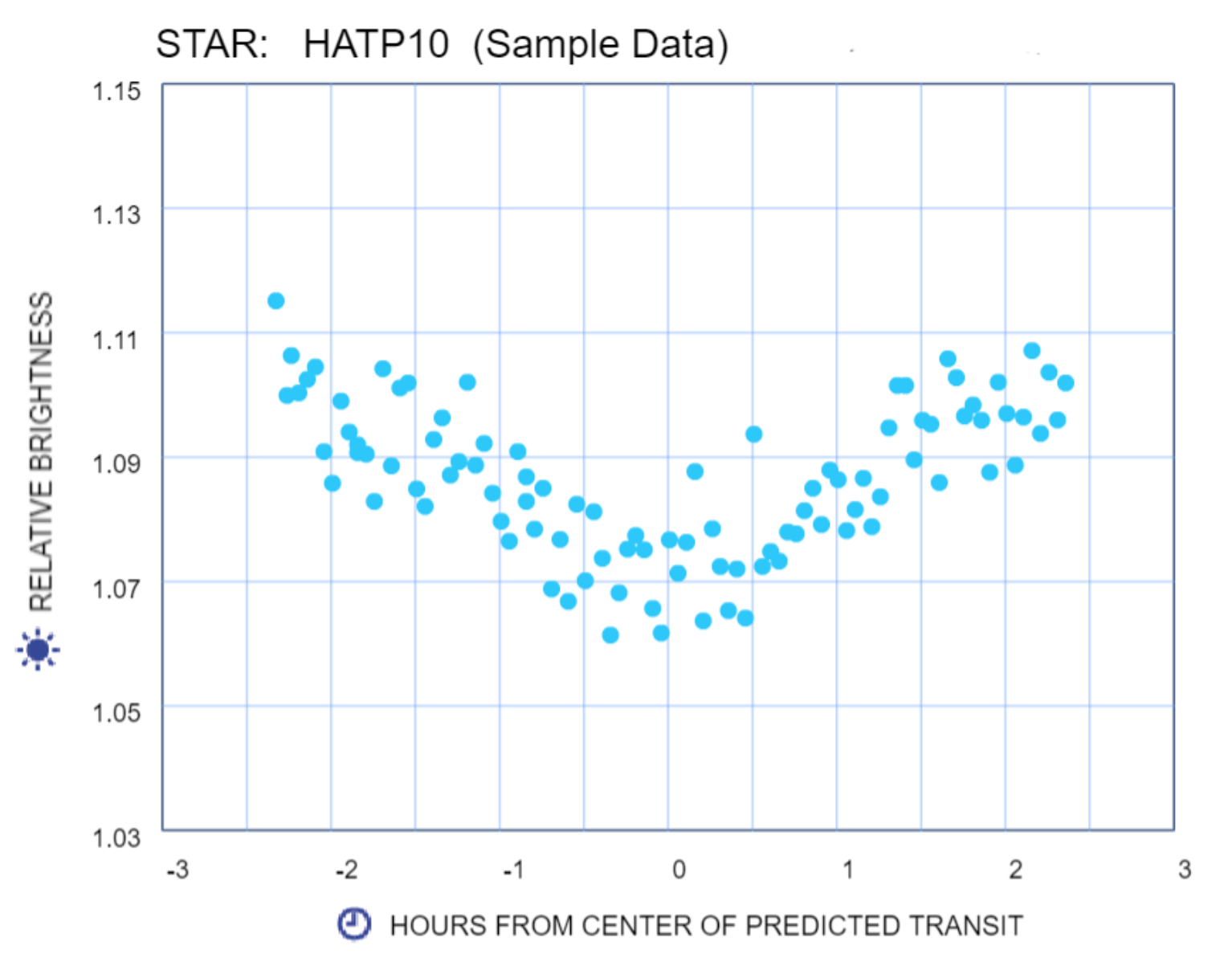




Time axis does not show the time of night. Shows the hours before or after the predected center of the transit. Astronomers have made this prediction based on previous observations of this star.



There is a relationship between distance and transit time. The closer a planet is to its star, the faster it moves—and so the shorter its transit time. From Newton's or Kepler's laws, you can derive the connection between a planet's speed (v) and the radius (R) of its orbit. The result is distance equation where the constant k involves the mass of the star. Since the transit time (t) is approximately proportional to 1/v, you can use the following relationship distance equation where the radius of the orbit is proportional to the square of the transit duration. Planets of our own solar system obey this relationship. Assume that your star is similar in size and mass to our own sun. Then you can use the radius of orbit graph shown to find where your planet would lie if it were in our own solar system. First use the data you collected for your planet to estimate the transit time, in hours. Then read off the corresponding orbital radius form the graph shown.